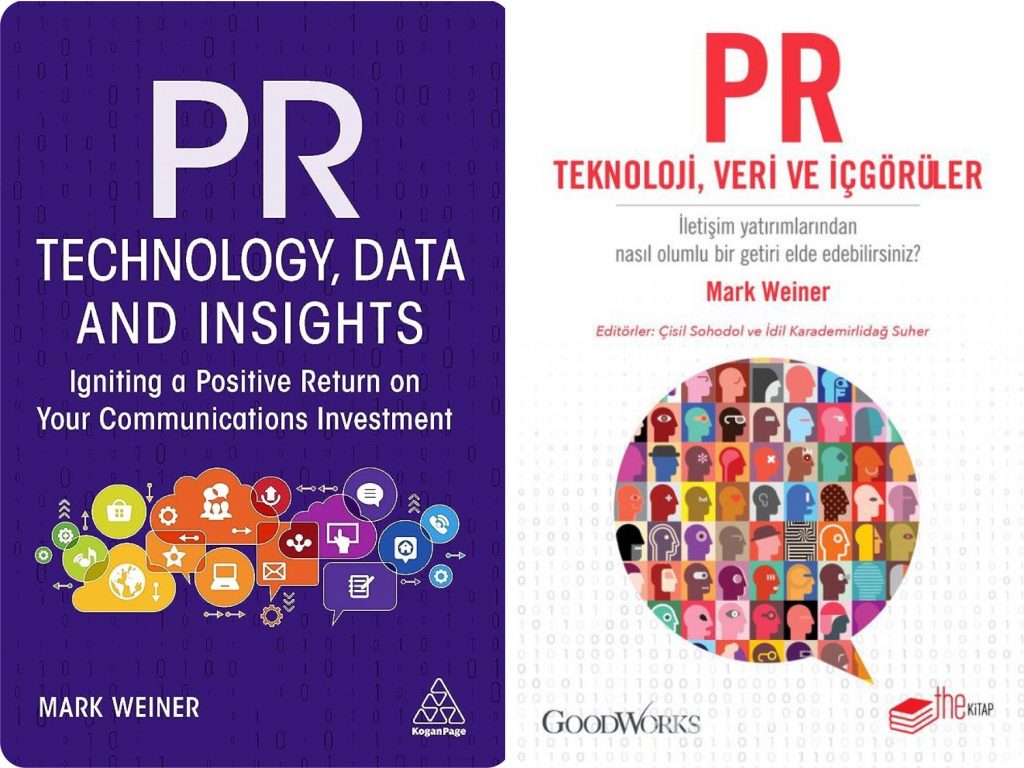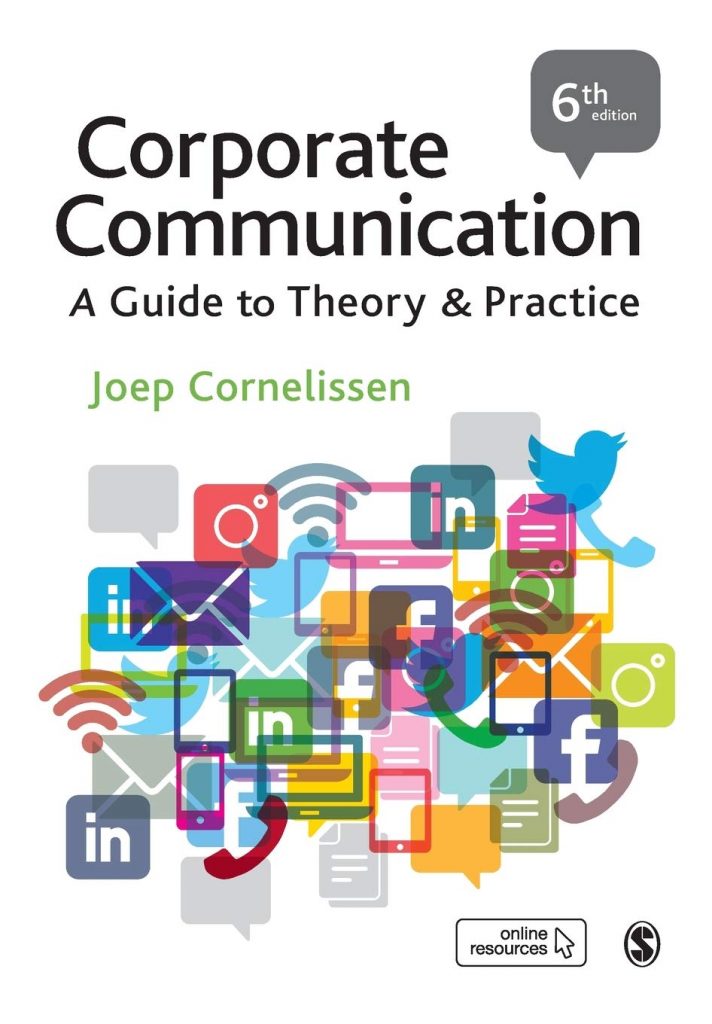PiaR, TECHNOLOGY, PROPAGANDA, and RESPONSIBLE COMMUNICATION PiaR, also known as Public Relations, is now called Corporate Communications. While previously it primarily covered interactions with the media, its scope has significantly expanded. That’s why every consumer is now interested in this subject. At the beginning of the century, it was also considered a conscious manipulation of public opinion rather than a focus on facts. Over time, its name became Corporate Communications, and it encompassed public relations as well as media.
In today’s landscape, the ability to think strategically and adapt rapidly in public relations has become increasingly vital, alongside technological innovations Corporate Communications, driven by experts utilizing Big Data and AI, allows us to take stances on critical issues such as environmental sustainability, workplace diversity, inclusion, and social matters like welfare, racism, and sexism—issues that hold significant moral and ethical sensitivity. Previously centred on predetermined targets and continual improvement measurement, Public Relations is now not just a tool of persuasion but also a means to increase revenue.
In the article below, I’ve delved into this subject using the latest published sources. Even if you are not directly involved in corporate communication, I believe it would interest you as a consumer. In fact, I think that if you are a professional manager (in finance, sales, marketing, HR), you should get to know this function that can make or break your strategies…
PR, known as Public Relations, later changed its name to Corporate Communications. Previously, public relations only covered relations with the media, but now its scope has expanded. The author of the book is Mark Weiner, an experienced communication manager and public relations researcher (1). Its Turkish translation was done by Prof. Dr. Çisil Sohodol and İdil Karademirlidağ Suher.

The book Crystallizing Public Opinion (2) by Edward L. Bernays, who is considered the father of Public Relations, has also been translated into Turkish. Bernays is the father of public relations, but the method he proposed was the conscious manipulation of public opinion; that is, it did not have to be based on facts. Many scientists and writers criticize Bernays for confusing propaganda with public relations (3).
We now know that PR is not propaganda. Developing technology in recent years has changed and transformed communication. In his book, Mark Weiner has prepared and presented in detail how technological developments, which are accelerating with the advancement of artificial intelligence, will cause changes in the fields of communication and public relations and how institutions will keep up with these developments. According to Tina McCorkindale, president and CEO of the Institute for PR, the ability for strategic thinking and rapid adaptation in public relations is increasingly crucial in today’s landscape due to the technological innovations we encounter. I wholeheartedly agree with this idea. In the first chapter, Weiner starts by stating that corporate communication, also known as public relations, is at a significant turning point. This is because professional communication experts are now building their practices on technology, data, and insights. We faced this reality during the major crisis we encountered on April 1, 2016, the story of which I told in the foreword I wrote to the Turkish version of the book Corporate Communication, and since then, we have shifted to corporate communication applications based on almost instantaneous data, which can be called analytical. (https://muratulker.com/y/bir-kitap-tavsiye-ediyorum-kurumsal-iletisim-profesor-joep-cornelissen-isinize-yakisiyor-musunuz/) That’s why Public Relations, that is, Corporate Communication function, is a shield against crises in the business world. Of course, measuring return on investment is also an area that needs to be developed. Mark Weiner says public relations is the area that provides the most efficient return on investment within the marketing and communications mix. I also agree with this.


Thanks to the data and insights provided by technology, organizations are now taking positions on highly sensitive issues such as environmental sustainability, diversity, and inclusion in the workplace, improving social welfare, racism, sexism, and other moral and ethical issues. Technology compiles data and insight to deliver the return on investment that organizations need. At this point, public relations fulfil its role by combining the necessary superior human qualities with the most fitting technology. While technology enables work to be done efficiently and consistently, human interpretive analysis, actionable insights, and strategic guidance contribute. So, in the book, the author says, “Technology can tell instant truth, but human analysis and insights make it possible to make decisions at the right time.”
And we can summarize the most enduring lessons Mark Weiner learned as follows:
– For those new to data-supported communication, start simple.
– Approximate data is better than being completely uninformed.
– When the subject becomes complex, it is necessary to refocus.
– Life is all about winning or losing. Every opportunity must be used well.
– Research and data bridge the gap between public relations and the business world. Data is now the language of business. Regarding public relations data, our focus should be on interpreting the data and how to manage the medium. However, human intelligence’s ability to reason and think critically is irreplaceable. The author repeatedly emphasizes in the book that the key to success lies in technology, data, and insights. Then he explains:
Technology
Communication technologies do not allow you to do things based on rote learning. However, it is up to the public relations specialist to implement it.
There are two trends: the utilization of big data and artificial intelligence.
Big data refers to advanced technology that enables the analysis and application of data sets for organization-wide, holistic decision-making systems. Big data systems serve as a hub for collecting numerous small data streams, including public relations data. I have previously written an article about artificial intelligence. (https://en.muratulker.com/y/how-artificial-is-artificial-intelligence-who-will-be-the-masters-of-the-future/ ) With the launch of ChatGPT, an important threshold has been crossed in this regard. It was first mentioned with the words “thinking machines,” used by British mathematician Alan Turing in 1950. Six years later, a computer scientist John McCarthy used the term “artificial intelligence,” referring to efforts aimed to develop computer programs that could think and solve problems as well as humans.
The promise of AI in public relations briefly includes targeting, media list development, content creation, media monitoring, analysis, and evaluation, , but there are still few verifiable examples. Analytical software entrepreneur Mark Stouse defines the main feature of artificial intelligence as thinking on its own after being trained, as I explained in detail in my article above. As per Stouse, “much of what we see in marketing and communications analytics today is not artificial intelligence, but various levels of automation and augmented intelligence,” . In other words, it is impossible for the use of artificial intelligence to become practice unless communication and public relations experts increasingly make such a demand. A study has shown that artificial intelligence distinguishes the most probable option among thousands of possibilities and presents it to communication experts. But no matter how good the choice of artificial intelligence is, human expertise is required to train the artificial intelligence system and make decisions. W. Timothy Coombs is a professor known for his important work in the field of crisis management, and his co-author Elina R. Tachkova, presented research findings at the International Public Relations Research Conference (IPRRC-2019), highlighting that preventable crises are caused by human error or mismanagement. It has been found that crises caused by organizations themselves require a very different response than other types of crises, and it has been understood that research that offers effective solutions to this type of crisis is not sufficient. Katie Pain, who has world-renowned works in the field of public relations, commented at the Future of Measurement Summit that she organizes every year, stating, “Artificial intelligence will only be valuable when it can identify types of crises (preventable or accidental) and recommend the most effective response strategy. “In response, Fullintel CEO Gaugarin Oliver offered to study the project to determine whether artificial intelligence can identify crises and recommend the most effective response strategy. Subsequently, they collaborated with crisis management professors Coombs and Katie Pain to prepare a research project to be presented at the IPRRC 2020 conference.
The research described artificial intelligence as the most effective response to a crisis caused by institutions themselves, providing the transformation from negative to neutral news in the shortest time. The process commenced with the collection of thousands of articles and news stories in the traditional media concerning three crises originating from human error and management misconduct. The selected crises are the Boeing 737 Max crisis (initiated by two plane crashes, revealing sensor failure as the cause) and the crisis experienced by WeWork (the crisis experienced by the company, which is an initiative that offers companies an office environment suitable for collaboration, due to management irregularities) along with an incident resulting in the unfortunate death of a young child.” The researchers then integrated the definitions of reaction/response types for crises put forward by Professor Coombs within the Situational Crisis Communication Theory into the system. Subsequently, Fullintel trained the machine learning technology on how to identify a crisis, classify its type, and determine various crisis response strategies, including attacking the accuser, denying, scapegoating, excusing, justifying, apologizing, compensating, and refraining from commenting. The next step was calculating the time it took to turn negative news into neutral news. The research revealed that the shortest time to neutrality is possible as a result of the institution experiencing the crisis apologizing or providing information about the incident, and the longest time to return to neutral news occurs due to reactions to denial and scapegoating of the victim. Researchers compared the accuracy of the outcomes generated by artificial intelligence with human analyses. They concluded that artificial intelligence and human analyses showed a 97% agreement in determining the crisis. Compliance with the point of providing the most effective response to the crisis was determined as 94%. Another skill that artificial intelligence can do is related to content creation. Will technology replace humans in the field of corporate relations? Isn’t this the most crucial question? Artificial intelligence and related technologies have not only increased productivity and efficiency but also eliminated numerous jobs. The author says that in some areas of production, robots are faster, more accurate, more consistent, and cheaper than humans. The lack of sick leave and holiday needs is another factor. Robots for public relations do not have the basic qualities that communicators have, but it is predicted that some professions, such as accounting, may disappear in the coming years. This technology will not be able to entirely replace humans in this regard. Computers can communicate with each other, but they can’t interact with masses of people or interpret complex issues. Abilities like empathy and creativity remain unique to humans. Most importantly, the paramount skill of a public relations/corporate communication specialist is persuasion.
Data
“Data are specific units of information that people use to make decisions.” The data section begins by saying that data does not only consist of numbers, words, concepts, and facts but also other data elements. They guide goal setting and strategy development by drawing on information about stakeholders’ behaviour and their information and consumption preferences. Today, the biggest challenge is not the need for data but rather obtaining the right data, filtering unnecessary ones, and finding new approaches to evaluate and apply them.
Experts need to gather data to determine the extent and timing of communication’s impact on the target society’s awareness, understanding, preferences, and behaviours.
The data process commences with establishing measurable objectives. Objectives rooted in data provide guidance towards achieving results that meet the fundamental criteria of being ‘reasonable, meaningful, and measurable.’ This approach facilitates the measurement of inputs, outputs, and outcomes, aiding in determining business results.”
Insights
As Weiner states, although data and technology are important for developing a profession, professional skills, experiences, and expertise are essential.
Philip B. Stark, professor of statistics at the University of California, explained in his article titled “Statistics means never having to say you are sure” that insights emerge from the combination of three elements. These elements are: • Technology: It enables data to be produced and quickly act on it, ensuring consistency. Specifically, for communication professionals, it can be said that technology platforms allow visibility into media coverage and responses, analyzing media content, and conducting fast and reliable surveys. • Subject expertise: Subject expertise enables reaching findings related to hypotheses. For public relations professionals, it means having experience and a solid understanding of the behaviour of target audiences. • Statistical intelligence and critical thinking: The presence of statistical intelligence and critical thinking ensures that findings are accurate, vetted, and reproducible.
When insights are based on them, it enables discerning which factors are more likely to be successful by strengthening the aspects that create competitive advantage and minimizing the negative aspects. Insight can be considered similar to an observation, but they are two different things. According to the definition in the book, observation refers to raw data seen without the elements of observation, judgment, and evaluation. Insight, on the other hand, reflects a deeper interpretation of the data. This is called the wisdom of explaining the reasons that determine what the people we communicate with love, read, and do as a result. In short, observations are thought-provoking and illuminating, while insights are explanatory and action-oriented.
The three steps that enable insights to emerge are defining the problem, data mining, and developing hypotheses to test the result.
Outputs consist of data that reflects what is produced as part of daily work. Output measurement involves, for example, tracking the number of people attending a press event, calculating how much media coverage a press release generates, or quantifying the reaction to a social media post. The final results are targets showing how much communication affects awareness, understanding, preference, and behaviour, which contribute to sales. Outputs contribute to outcomes related to end goals because, when effective, they trigger a change in the target audience’s minds. For success, both tactics and strategy must be made. Data-driven strategy development and tactical execution reduce risk and increase the likelihood of success. Using technology and data to get the most out of public relations research, investment, and actionable insights enables better strategic and tactical decision-making and a better return on investment.
In corporate communication, evaluation of activities is essential. In fact, evaluations need to be measured continuously due to problems in measurement methods. Covid-19 is given as an example in the book. A good communication assessment tells you more than just what happened. It is essential to make regular evaluations to avoid saying, “It is Too Late Now,”
Important Questions That Those Making Investment Decisions in the Field of Corporate Communication Should Ask:
1) Do we have meaningful, measurable, and reasonable goals? Do we evaluate our performance against targets and competitors by comparing it with our past?
2) Besides focusing on simpler quantitative measures in our evaluation, do we also evaluate the impact of public relations on business performance, such as how much it contributes to our sales?
3) Do Corporate Communication activities and results provide experience, and are they useful for our continuous learning?
The Global Alliance for Public Relations and Communication Management, the parent institution of many public relations associations and institutions with 360,000 members worldwide, has issued a declaration to communication professionals. He requested that a new one be added to the 17 development goals (SDG, Sustainable Development Goals, Sustainable Development Goals) and that this goal be RESPONSIBLE COMMUNICATION (4); https://www.linkedin.com/posts/prof-dr-%C3%A7isil-sohodol-0774311b4_uzun-zamand%C4%B1r-beni-bir-konuda-en-%C3%A7ok-heyecanlad%C4%B1ran- activity-6996515171280039939-sBP_– Relations between people should occur in an atmosphere of trust that facilitates the exchange of ideas and understanding based on different ideological and cultural positions. Living together requires fundamental agreements such as human rights, respect for institutions, separation of powers, and individual sovereignty.
-However, fake news has become a threat to the coexistence of people and communities. Numerous studies scientifically show that lies circulate faster than the truth on social networks. The overall decline in the credibility of institutions, companies, and individuals leads to a loss of trust in political and economic systems. Distrust and discredit undermine the foundations on which democracy is built.
–Losing trust in the institutions that govern us affects both our personal and professional relationships. Globalization has facilitated manipulative and propagandist attitudes.
-Communication professionals have responsibilities to the communities that make up the organizations they work for, as well as to the society of which those organizations are a part.
What should we understand by responsible communication:
•Open dialogue about global challenges such as climate change, poverty reduction, and democracy
•Freedom of thought and press
•Ethical approach to corporate communication based on facts
• Combating fake news and all forms of propaganda
• Educating individuals to use their “communication power,” especially through social media
•Support for robust journalism
•Advocacy for deep diversity and gender equality
•Empathy for those suffering from hunger, poverty, lack of opportunity, war, forced migration and discrimination
• Positive and inclusive language
All of these goals are admirable, yet doesn’t read this declaration inevitably bring to mind Bernays, often regarded as the father of public relations, whom I mentioned at the beginning of my article? Isn’t it intriguing that by 2023, he is still criticized while the manipulative public relations strategies he proposed haven’t been entirely overcome?
Think about the potential harm those who view corporate communication through the lens of Bernays could inflict on society with artificial intelligence, even if they purportedly embraced responsible communication.
Sources
(1)Weiner, M. (2022), (Translation Editors: Ç. Sohodol and İ. Karademirlidağ Suher), PR: Technology, Data and Insights, The Kitap Publications, pg. 244.
(2)Bernays, E. (2022). Evident Lamuoyu, Kabalcı Publishing House, pg.168.
(3) Ewen, S. (1997) PR: A Social History of Spin, Basic Books, pg.496.
(4) https://www.globalalliancepr.org/open-call-new-goal-to-the-sustainable-development-goals
Note: This open-source article can be quoted by citing the author. Does not require copyright.

